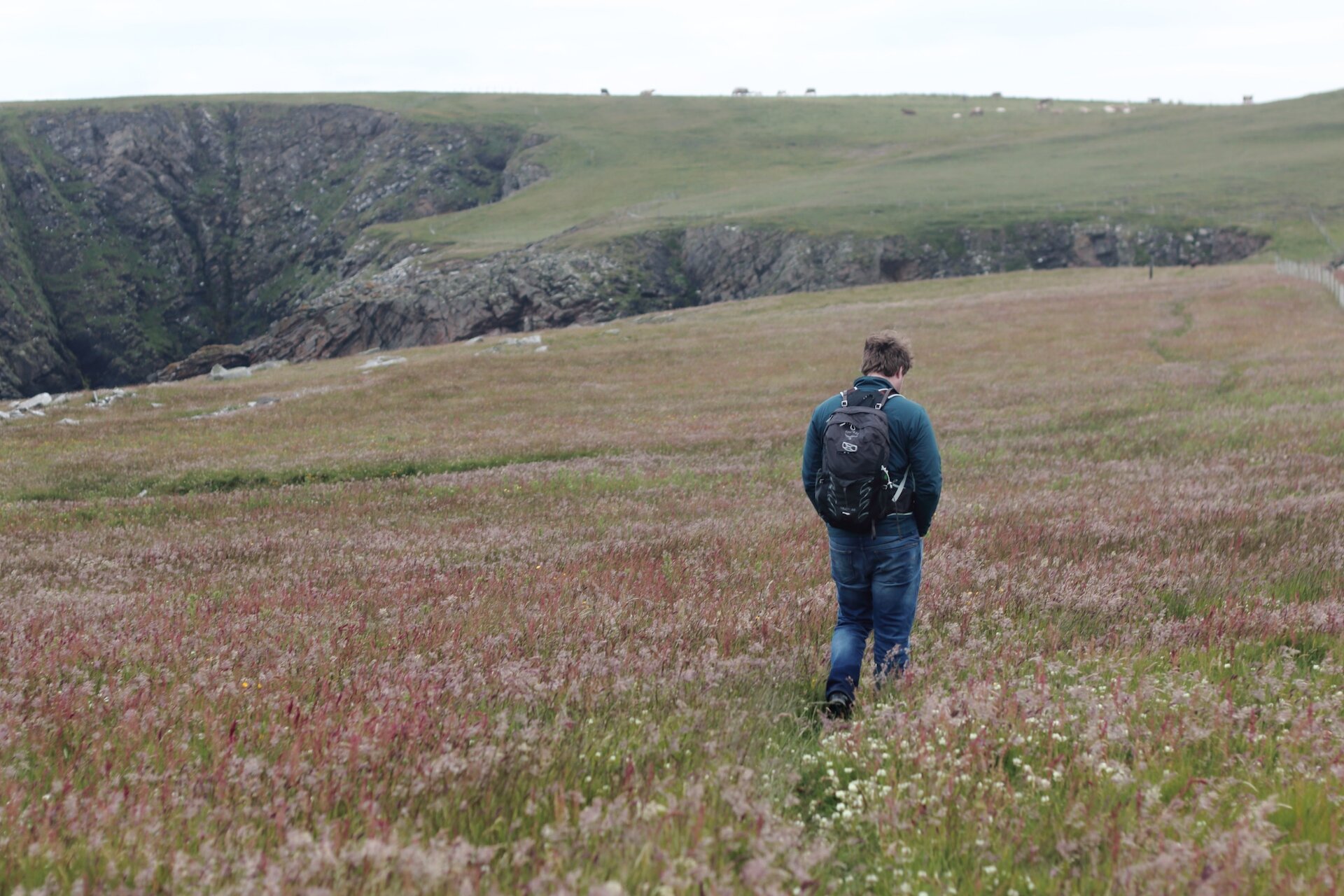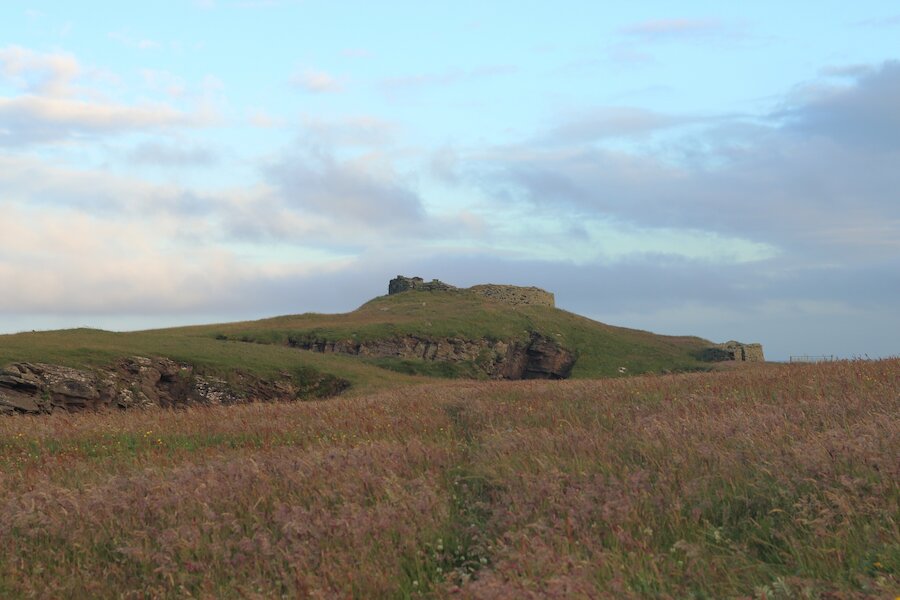Distance: 3.5 miles (4.8 km)
Sometimes a quick after-dinner hike is just what’s needed to blow away the cobwebs after a dull and rainy day. Some of my favourite summer nights are the unexpected ones. The ones where, after a day of prolonged rain, the clouds part and the sun comes out to kiss the landscape goodnight – reminding us that she’s still here.
This happened recently, and we took full of advantage of the emerging sun, piled the bikes into the van, filled a thermos and headed to Shetland’s South Mainland for an evening dose of vitamin sea.
Parking at Sandsayre Pier where passengers wait for the Mousa Ferry, we followed the main road past Sandlodge towards Sandwick. Just behind Sandlodge, a rough track veers up the hill. Halfway up the track, there’s a modern house on the right, which the track runs behind.
Sandlodge was built as the laird’s house (landlord) in the early 1600s by the Sinclairs of Quendale. It was later bought by the Bruce family who held the Sumburgh Estate – comprising a large proportion of the South Mainland – Sandlodge was added to their property and land portfolio in the 1750s. The house has had several extensions over the years and was also the site of an attempt at copper mining.






